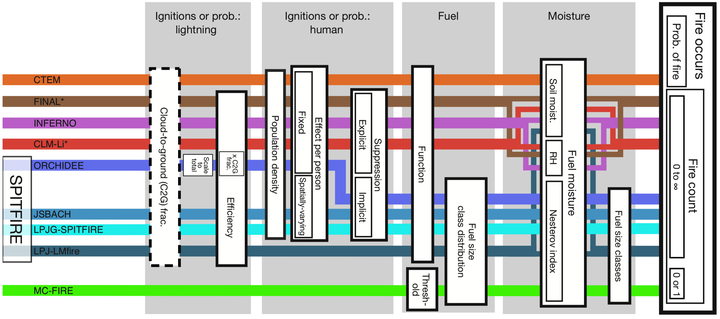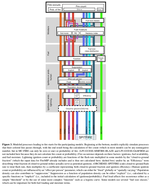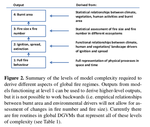FireMIP

The Fire Model Intercomparison Project (FireMIP) seeks to enhance the understanding of the role of vegetation fire in the Earth system. Standardized model experiments allow us to generate historical time series and evaluate model performance. These inform the interpretation of other experiments that generate future projections under different scenarios of climate change and socioeconomic development.
Related
- Quantitative assessment of fire and vegetation properties in simulations with fire-enabled vegetation models from the Fire Model Intercomparison Project
- The status and challenge of global fire modelling
- Historical (1700–2012) global multi-model estimates of the fire emissions from the Fire Modeling Intercomparison Project (FireMIP)
- The Fire Modeling Intercomparison Project (FireMIP), phase 1: experimental and analytical protocols with detailed model descriptions
- The influence of thinning and prescribed burning on future forest fires in fire-prone regions of Europe
Publications
Quantitative assessment of fire and vegetation properties in simulations with fire-enabled vegetation models from the Fire Model Intercomparison Project
Historical (1700–2012) global multi-model estimates of the fire emissions from the Fire Modeling Intercomparison Project (FireMIP)
Fire emissions are a critical component of carbon and nutrient cycles and strongly affect climate and air quality. Dynamic global vegetation models (DGVMs) with interactive fire modeling provide important estimates for longterm and large-scale changes in fire emissions. Here we …
The Fire Modeling Intercomparison Project (FireMIP), phase 1: experimental and analytical protocols with detailed model descriptions
The status and challenge of global fire modelling
Biomass burning impacts vegetation dynamics, biogeochemical cycling, atmospheric chemistry, and climate, with sometimes deleterious socio-economic impacts. Under future climate projections it is often expected that the risk of wildfires will increase. Our ability to predict the …



